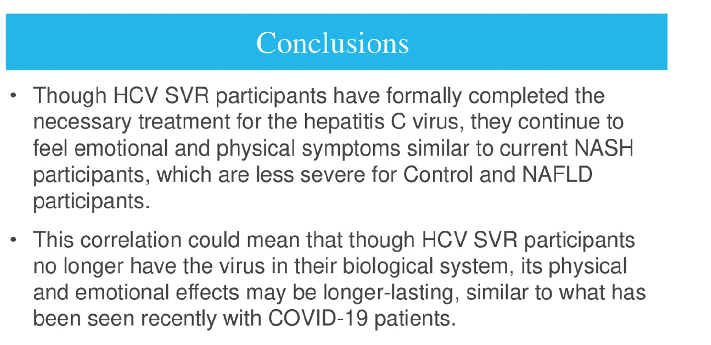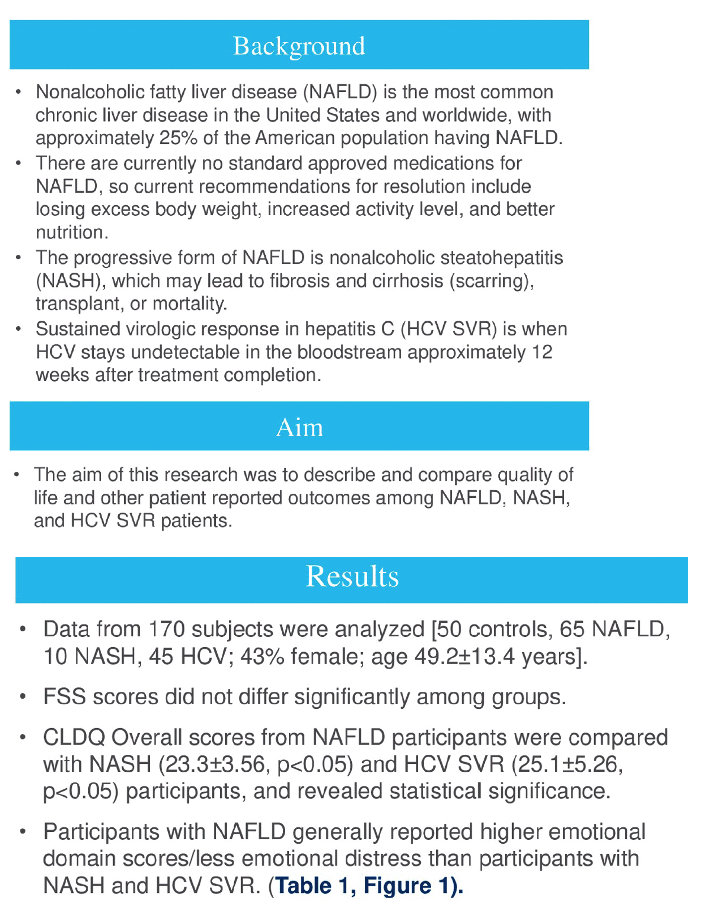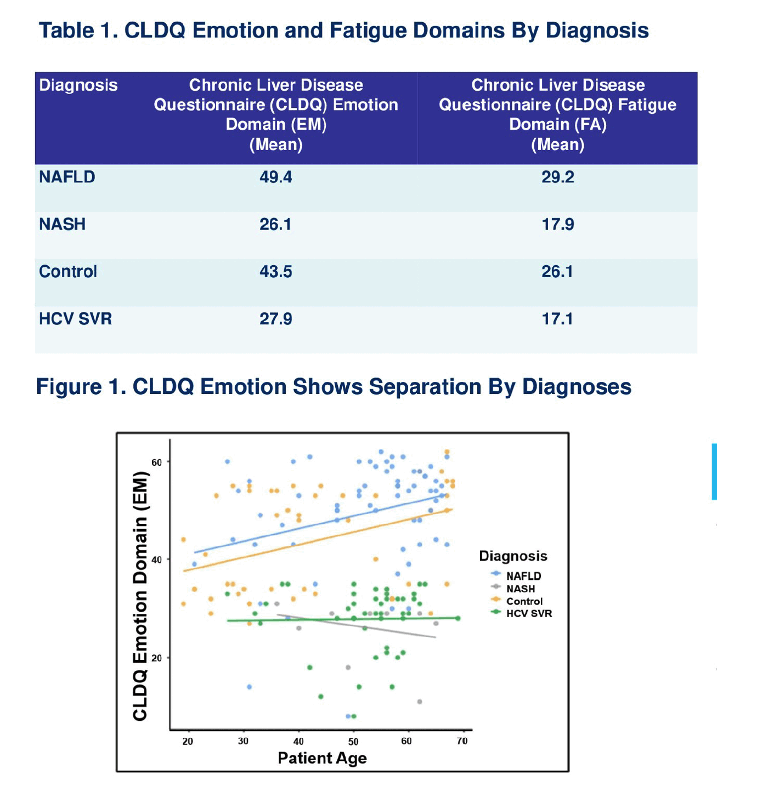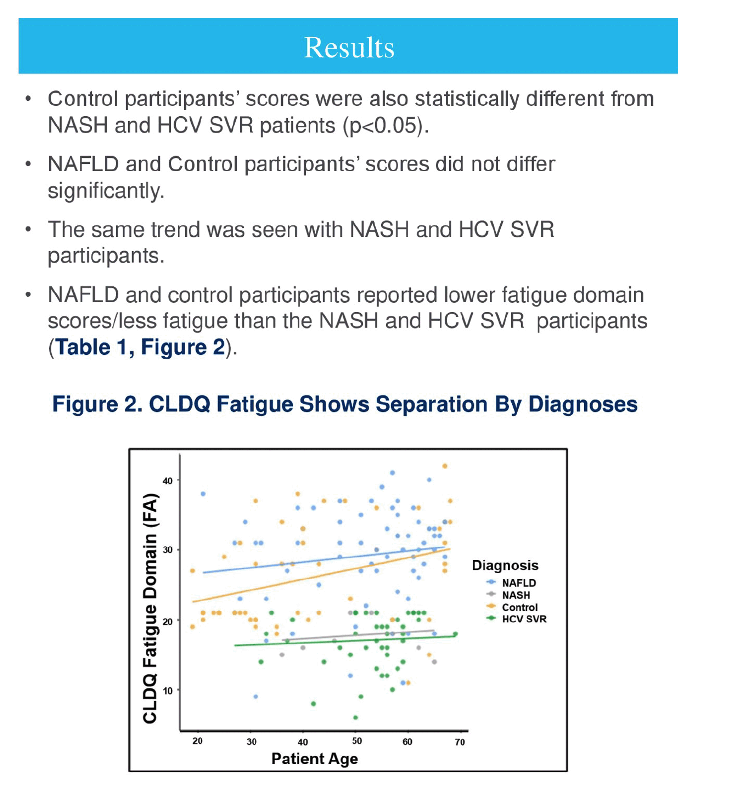 |
 |
 |
| |
PERCEPTIONS OF QUALITY OF LIFE, FATIGUE AND
HEALTH OUTCOMES IN CHRONIC LIVER DISEASE PATIENTS
|
| |
| |
DDW 2024 May 17-21 Wash DC

Dr. Zobair Younossi
Author(s): Sri Vaishnavi Konagalla, Jillian Kallman Price, Carey Escheik, Lynn Gerber, Zobair M. Younossi

Introduction: Nonalcoholic fatty liver disease (NAFLD) is the most common chronic liver disease in the United States and worldwide, with approximately 25% of the American population having NAFLD. There are currently no standard approved medications for NAFLD, so current recommendations for resolution include losing excess body weight, increased activity level, and better nutrition. The progressive form of NAFLD is nonalcoholic steatohepatitis (NASH), which may lead to fibrosis and cirrhosis (scarring), transplant, or mortality. Sustained virologic response in hepatitis C (HCV SVR) is when HCV stays undetectable in the bloodstream approximately 12 weeks after treatment completion. Purpose/Aim: The aim of this research was to describe and compare quality of life and other patient reported outcomes among NAFLD, NASH, and HCV SVR patients. Methods: Participants were recruited prospectively for observational research for two NAFLD studies at a tertiary care center for patients with liver disease on Inova Fairfax Medical Campus. Research was approved by the Inova Institutional Review Board. Variables analyzed included cognitive performance in individuals with T2DM and fatty liver, as well as physiological performance, fatigue, and quality of life. Participants were categorized into controls without liver disease, NAFLD, NASH, or HCV SVR groups. Demographic data, and scores on the Fatigue Severity Scale (FSS) and Chronic Liver Disease Questionnaire (CLDQ) metrics were collected. Scoring high on the FSS is linked to higher levels of fatigue, while scoring high on the CLDQ relates to better quality of life. Correlation matrices, normality tests, t-tests, Mann-Whitney U Test, and the chi square test of association were performed using the statistical analysis software Jamovi, version 2.2.
Results: Data from 170 subjects were analyzed [50 controls, 65 NAFLD, 10 NASH, 45 HCV; 43% female; age 49.2+/-13.4 years]. FSS scores did not differ significantly among groups. CLDQ Overall scores from NAFLD participants were compared with NASH (23.3+/-3.56, p<0.05) and HCV SVR (25.1+/-5.26, p<0.05) participants, and revealed statistical significance. Control participants' scores were also statistically different from NASH and HCV SVR patients (p<0.05). NAFLD and Control participants' scores did not differ significantly. The same trend was seen with NASH and HCV SVR participants.
Conclusion: Though HCV SVR participants have formally completed the necessary treatment for the hepatitis C virus, they continue to feel emotional and physical symptoms similar to current NASH participants, which are less severe for Control and NAFLD participants. This correlation could mean that though HCV SVR participants no longer have the virus in their biological system, its physical and emotional effects may be longer-lasting, similar to what has been seen recently with COVID-19 patients.



|
| |
|
 |
 |
|
|